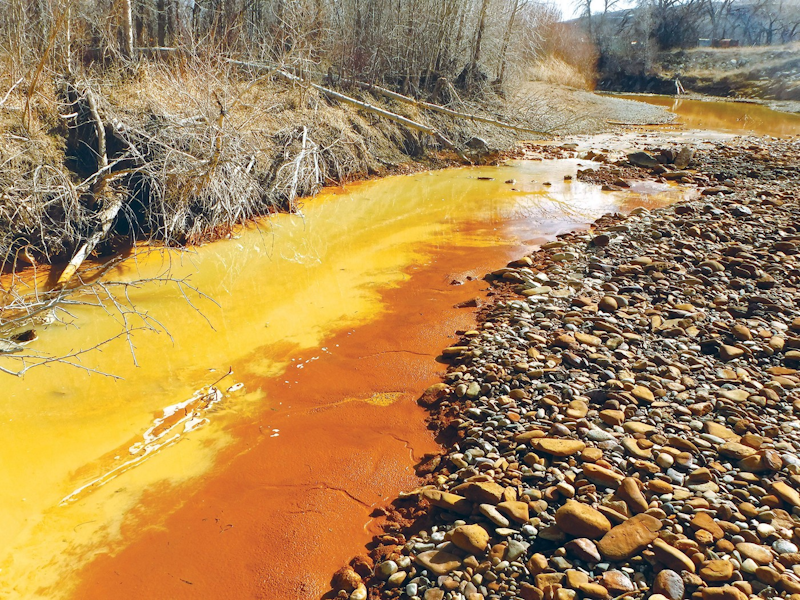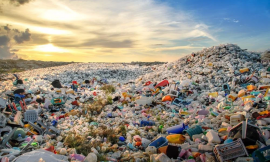It’s no secret that mining can produce a lot of waste and is hard to recycle. This is evident by giving an overview of any mining operation and the scale at which it operates. In fact, in most cases, you’ll probably only notice the actual mining waste, since the majority of real mining takes place underground. Mining waste found in quarry lagoons can be problematic due to the fact that it contains hazardous materials that can be released into the environment if not properly handled. Some of these hazardous materials include heavy metals, metalloids, radioactive waste and acidic water.
Rocky or solid mining waste
Surface mining involves several waste stages. First, to access the ore seams or veins, the upper layers of rock or overburden must be removed. Once the overburden has been removed, the seams can be pulled out. When mining seams, there are additional tailings that must be separated from the ore. This extra waste rock is called gangue. When the gangue is processed (finely ground), more waste is produced, called tailings. Mine tailings are another waste that must be removed from the site.
Surface mining involves several waste stages. First, to access the veins or veins of ore, the top layers of rock, or overburden, must be removed. Once the overburden has been removed, the seams can be pulled out. When mining the seams, the extra tailings will be removed to reach the actual ore, called gangue. Then, as the material is processed and finely ground, even more waste, called tailings, will need to be removed from the site.
Waste rock or overburden refers to the often large mass of initial soil and rock that is removed to reach the valuable mineral deposits. Typically, for every tonne of ore mined, 5 tonnes of overburden is moved. The overburden is not subjected to any chemical process, but must be removed to access the ore below. Overburden is managed by using it to resurface previously mined areas to revegetate them and restore them to their original appearance before being mined.
Gangue is the rock or worthless material that is tightly mixed with the valuable material to be processed. The separation of minerals from gangue is called mineral processing. Often, inefficient processing methods can produce gangue which still contains a large amount of valuable minerals. As mineral values increase, it may even be cost effective to reprocess the gangue to extract additional minerals that may have been missed in the first processing.
Mine tailings
Tailings are finely crushed rock and other mineral waste resulting from mineral processing. Due to the way the minerals are processed, tailings may contain concentrations of processing chemicals. This can make mine tailings an environmental concern, so proper transport and disposal is essential. Therefore, the next step is to pump the tailings using slurry pumps into the tailings ponds. Tailings ponds are sedimentation retention ponds surrounded by dams and revetments to capture and store waste.
Mine water is produced in different ways at mine sites and can vary in levels of contamination. Water exposed to mining processes is also often acidic and can contaminate local water sources in a process called acid mine drainage (AMD) or acid rock drainage (ARD). Acid mine drainage is a major contributor to surface water pollution around the world. AMD is mainly caused when water runs over the sulphide-heavy material, forming an acidic solution. Water at mine sites is usually heavily monitored and management strategies are employed not only to reduce the amount of mine water produced, but also to treat the water before it is released into the environment.
Sludge is produced at some mine sites and is similar to mine wastewater, but has added solids and process chemicals. These additions turn the water into a more viscous sludge which can then be pumped away from the site. Since the majority of sludge has little economic value, it is essentially treated as waste. In extreme cases where sludge is rich in harmful or radioactive material, it may be classified as hazardous waste and require special handling and disposal methods.
The Dredger is a simple, effective and easy to use alternative to more complicated heavy dredging equipment. The best solution for dredging shallow ponds or lagoons.
Mining waste management
The waste management techniques employed by mining companies regularly come under scrutiny from local governments and the general public. Improper disposal methods and the resulting environmental damage have affected the history of the mining industry. These actions have left a negative stigma associated with mining and associated waste. For this reason, many countries now require miners to prepare a full mine waste disposal proposal before a mining permit is granted. To ensure long-term storage stability and avoid violating any regulations, mining waste is carefully managed at every stage of the process.
The volume of waste from mining operations is high, and due to the large volumes of waste, environmental concerns will inevitably arise. In response, mining engineers have developed smart methods of waste management, making the mining industry one of the few that actively recycles its own waste. Overburden is used for retreatment, land contouring and as construction aggregate for buildings and roads. Mine tailings are reused to produce clay, tiles, glass and concrete. Mine water is treated and then used for dust and particulate suppression, agricultural and industrial purposes, and as a coolant.
Despite many recycling methods, the majority of mining waste is still stored in waste facilities or sites. The long-term storage of these facilities has become an important topic in modern mine closures. Various regulations have been passed that require the waste to be stable for years, sometimes centuries. This requires engineers to develop storage methods to withstand catastrophic events such as floods, severe storms and earthquakes.
Sustainable environmental impact
The main environmental impacts of mining waste include the loss of land following its conversion into a tailings pond or a waste storage area and the introduction of acidic runoff or other contaminated sediments into the local environment. The specific environmental impact of waste is highly dependent on the composition of the material, the type of ore mined and how the ore is processed.
For example, gangue and tailings from heavy metal mining could have a high concentration of sulphides, which could lead to acid rock drainage. Due to the many variables, mining operations will need to develop their own waste disposal methods in accordance with regulations for the different types of waste they produce. However, it should be noted that much mining waste is environmentally benign and is commonly used to revegetate or contour land when mining is complete.






